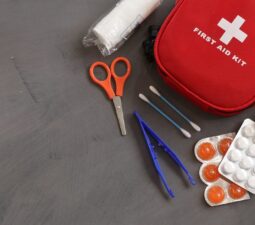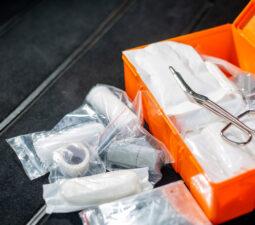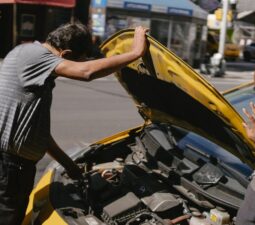Povinné ručení přeplácí více než polovina lidí
Povinné ručení nabízí každá pojišťovna, která se soustředí na automobilový trh. Více než 50 % řidičů cenu povinného ručení nijak nepřepočítává a akceptuje cenu danou svou pojišťovnou. Ceny pojistek nejsou nijak regulovány, což může představovat výrazné rozdíly až několik tisíc ročně. Přičemž cena hraje nejdůležitější roli. Nejlevnější povinné ručení udělá stejnou službu jako to dražší.
Povinné ručení je zákonné pojištění auta, jenž v případě autonehody hradí škody na vozidle poškozeného. Stane-li se klient obětí nehody, kryje škody na jeho vozu povinné ručení řidiče, který nehodu zapříčinil. Povinné ručení chrání pojištěnce proti újmě, kterou zaviní provozem svého vozu třetí straně.
Vyhledat nejlevnější povinné ručení je investice času a mnohdy znamená se dlouhé hodiny probírat mnoha ceníky a nabídkami jednotlivých pojišťoven. Proto přichází srovnávač povinného ručení. Jak v tomto ohledu maximálně ušetřit? Pomocí online kalkulačky. Cena povinného ručení vozidel na online kalkulačce začíná již od 968 Kč. Díky Vpojisteni.cz ušetří na povinném ručení až 86 % řidičů.
Vyzkoušet online kalkulačku povinného ručení >
Je zbytečné jezdit po pojišťovnách nebo stahovat ceníky z webových stránek. Srovnávač povinného ručení umožňuje jednotlivé pojistky porovnat z pohodlí domova během okamžiku. Nezáleží přitom na tom, zda pojištěnec míní pojistit auto nové či ojeté. Nabídky nejlevnější pojistky je pro nová i ojetá auta.
Online kalkulačka vyžaduje vyplnit několik údajů o vozidle (rok výroby, objem motoru, model, palivo, a další), dále údaje o řidiči a počtu předchozích nehod. Na základě těchto dat kalkulačka ihned zobrazí konkrétní cenové nabídky a srovnání pojištění přímo na míru. Složitá orientace v tabulkách ceníků jednotlivých pojišťoven odpadá.
Online srovnávače dlouhodobě snižují ceny zákonných pojištění, poněvadž vyvíjejí tlak na konkurenci. Součástí kalkulaček jsou formuláře k ukončení již nevyhovujících povinných ručení a přepisů vozidla na jinou osobu. Porada a sekce často kladených otázek je samozřejmostí.
Co říkají odborníci?
„V současné době rostou ceny téměř všeho. Jednou z oblastí, kde je možné ušetřit, je pojištění vozidel. Nemá smysl být zbytečně věrní jedné jediné pojišťovně, pokud neposkytuje nejlepší možnou nabídku – takže když se má pojistka znova obnovit, vždy je potřeba si najít čas a porozhlédnou se, zda je na trhu možné najít lepší nabídku. A nezapomenout, že pokud klient může, je vždy levnější platit jednou ročně než několikrát za rok nebo měsíčně.“
Havarijní pojištění
Povinné ručení není jediným pojištěním vozidel, o něž mají řidiči zájem. Nejde již pouze o naplnění zákonných podmínek, jde také o ochranu vlastního majetku, potažmo minimalizování finančních ztrát.
K těmto účelům slouží havarijní pojištění, které přijde vhod nejen při autonehodách, nýbrž také při živelných pohromách, vandalismu nebo krádeži motorového vozidla. Jak szískat havarijní pojištění vozidel, které bude výhodné a zároveň kvalitní? Prostřednictvím online srovnávače.
Online kalkulačku lze nezávazně vyzkoušet, čímž žadatel získá přístup k desítkám prověřených nabídek na levné havarijní pojištění vozidel od spolehlivých pojišťoven. Ceny zobrazené online kalkulačkou jsou konečné a bez skrytých poplatků.
Cestovní pojištění za výhodnou cenu
Cestování do ciziny nemusí znamenat předražené cestovní pojištění. Existují levné a velmi výhodné varianty. Optimálním nástrojem pro nalezení toho nejlepší cestovního pojištění je online srovnávač. Nabízí přehledný seznam výhodných nabídek, bonusů i pojistného krytí.
Sjednání levného cestovního pojištění do zahraniční probíhá online, včetně platby kartou nebo bankovním převodem. Pojišťovna zasílá veškeré dokumenty e-mailem, stačí je vytisknout nebo ponechat v telefonu. Cestovní pojištění platí ihned.
Cestovní pojištění tak vyjde mnohem výhodněji, než kdyby si cestující sjednal pojistku u cestovní kanceláře.
Cestovní pojištění se mnohonásobně vyplácí. Nelze se spoléhat pouze na kartičku zdravotní pojišťovny, ta slouží jen k neodkladné péči na území EU. Komerční cestovní pojištění však dokáže ochránit i před takovými platbami, jako jsou náklady na převoz do nemocnice, pobyt v nemocnici, převoz zpět do ČR, asistenci v českém jazyce, právní ochranu, ztrátu zavazadel, škody na majetku a zdraví třetích osob, a mnoho dalších.
Cestovní pojištění – srovnání funguje na stejném principu jako kalkulačky povinného ručení a havarijního pojištění. Cena se odvíjí od cílové destinace, typu cesty (pracovní, turistika, studijní pobyt) a také, zda je v balíčku zahrnuta i pojistka rizikových sportů
Nabídka portálu Vpojisteni.cz
Srovnávání pojištění není žádná velká zábava. Proto se portál Vpojisteni.cz snaží držet u služeb maximální jednoduchost. Cílem je pomoci najít správný produkt za správnou cenu. A klienti mohou portálu důvěřovat, že je nestranný – vydělává pouze tehdy, když klient změní produkt nebo sjedná nový. Je v zájmu Vpojisteni.cz pomoci správně se rozhodnout.

















